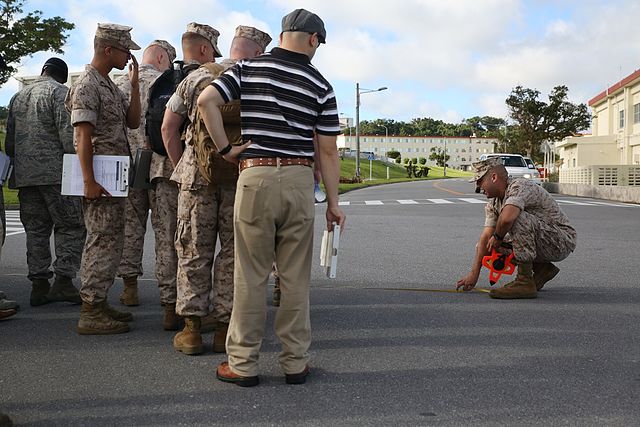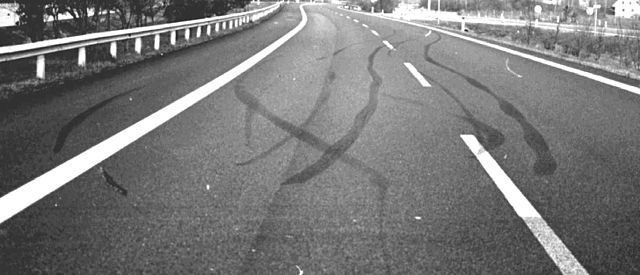Traffic collision reconstruction
Traffic collision reconstruction is the process of investigating, analyzing, and drawing conclusions about the causes and events during a vehicle collision. Reconstructionists conduct collision analysis and reconstruction to identify the cause of a collision and contributing factors including the role of the driver(s), vehicle(s), roadway and general environment. Physics and engineering principles are the basis for these analyses and may involve the use of software for calculations and simulations. Collision reconstruction is sometimes used as the basis of expert witness testimony at trials. Collision reconstructions are performed in cases involving fatalities or personal injury. Results from collision reconstructions are also sometimes used for making roads and highways safer, as well as improving safety aspects of motor vehicle designs. Reconstructions are typically conducted by forensic engineers, specialized units in law enforcement agencies, or private consultants.

Roadside investigative training exercise
Skid marks on an asphalt road.
Toronto Police CRU vehicles at the scene of a large accident in North York in 2014
A skid mark is the visible mark left by any solid which moves against another, and is an important aspect of trace evidence analysis in forensic science and forensic engineering. Skid marks caused by tires on roads occur when a vehicle wheel stops rolling and slides or spins on the surface of the road. Skid marks can be analyzed to find the maximum and minimum vehicle speed prior to an impact or incident. Skidding can also occur on black ice or diesel deposits on the road and may not leave a mark at all.
Skid marks on an asphalt road.
Skid mark from a faulty ladder




